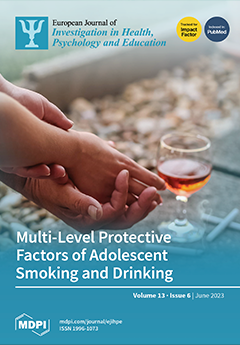Background and aim: Because they are unaware of the potential adverse effects of medications, people frequently self-medicate as a form of self-care. This study aimed to investigate the factors associated with health literacy and the propensity to self-medicate among the primary healthcare clientele
[...] Read more.
Background and aim: Because they are unaware of the potential adverse effects of medications, people frequently self-medicate as a form of self-care. This study aimed to investigate the factors associated with health literacy and the propensity to self-medicate among the primary healthcare clientele of the city of Hail, Saudi Arabia. Methods: This research employed a cross-sectional approach with the participation of 383 primary health center clientele of the Hail Region of Saudi Arabia. Participation was enacted via convenience sampling from December 2022 to February 2023. The data were collected using a self-administered questionnaire. The investigation utilized descriptive statistics as well as multiple linear regression and correlation for the data analysis. Results: Participants who were aged 30 years and above, single, had a college degree, were non-Saudi, had a white-collar occupation and received information from the internet/Google/YouTube had a significant relationship (
p < 0.05) with health literacy. On the self-medication scale (SMS), there were significant relationships with age, marital status, educational level and occupation (
p < 0.05). The nationality and source of information factors related to health had a positively significant effect on health literacy (
p < 0.01), while middle age (24–29 years) had a positive effect on the self-medication scores (
p < 0.01). There was a significant positive correlation between the health literacy screening scale (BRIEF) and the self-medication scale (SMS) scores (r = 421,
p < 0.001). Conclusion: Age of 30 years old or above, single status, a college degree, non-Saudi status, white-collar occupation and receiving information from the internet/Google/YouTube were all significant for health literacy. There were also significant relationships with the SMS scores for age, marital status, educational level and occupation. The factors affecting health literacy were older participant age, nationality and the source of information regarding health. Conversely, among the participants, being in the middle-aged group (24–29 years) was a factor that affected their self-medication scores. There was a significant positive correlation between the health literacy screening scale (BRIEF) and the self-medication scale (SMS).
Full article






